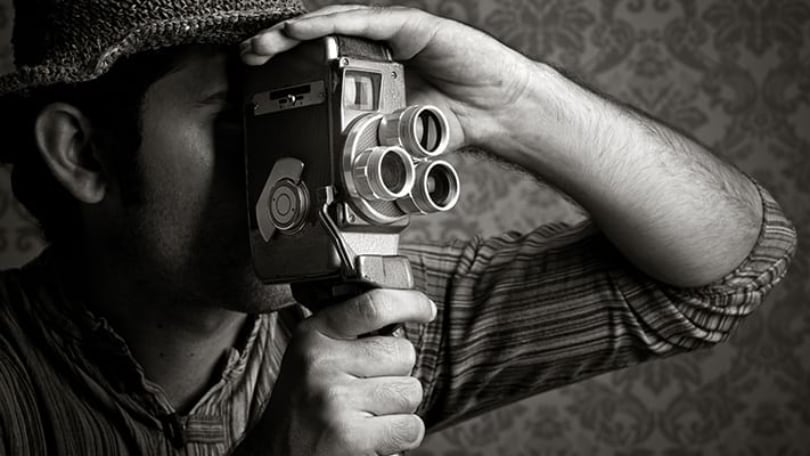Understanding the Video Production Process: Pre-Production, Production & Post-Production
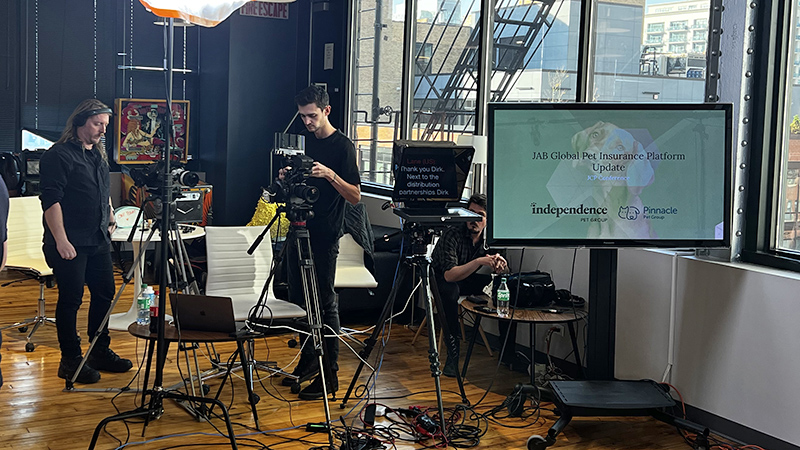
As a long-standing and top video production company based in Chicago, LANE Media & Productions has expert knowledge in the power and impact of a well-executed video production project. Whether it's for advertising, marketing, or storytelling, a strong and cohesive video production process is essential for success. Our team works around the country for our clients and we have developed a playbook we would like to share with you.
But where do you start?
With so many moving parts and stages involved, it can be overwhelming to understand the entire video production process. That's why we've put together this comprehensive guide to walk you through the three phases of video production: Pre-Production, Production, and Post-Production.
Not only will you learn about each phase in detail, but we will help you understand the nuances and best practices to implement into your next video project.
Let's dive into the exciting world of video production and see how we can help elevate your next project!
Table of contents
What is the video production process?
The video production process refers to the steps involved in creating a video from start to finish. The process is typically broken down into three stages: pre-production, production, and post-production.
These stages involve various elements and components, each of which is crucial to the success of the final product.
Here's an overview of what the video production process includes:
- Development of video strategy and goals
- Content planning and scripting
- Talent and character selection
- Location scouting
- Equipment selection
- Schedule creation
- Setting up sound, filming, and lighting equipment
- Capturing all footage
- Conducting interviews (if necessary)
- Recording voice-overs (if needed)
- Capturing b-roll
- Producing animation, motion graphics, or special effects (if necessary)
- Video editing
- Color grading
- Music and sound effects selection
- Aligning voiceovers with recorded footage
- Video formatting and finalizing
This process can be done in-house or with the help of a professional video production company. Each step of the process must be executed properly to ensure that the final product meets the desired standards of quality and creativity.
Reveal the full potential of your vision with dynamic video production that captivates your audience and delivers results.
The importance of the video production process
Video production is a complex process that requires careful planning and execution. From storyboarding and casting to lighting and sound, every aspect of the production must be carefully considered to create a final product that meets the goals of the project. Whether you're working with a team of professionals or independently, understanding the video production process is essential for success.
Whether you're looking to create an explainer video for your new product, a commercial for your brand, or a corporate video to promote your company culture, there are vital steps to follow that will guide you through an efficient workflow.
Quality video production is a careful process that results in a product that:
- Effectively communicates your message
- Builds your brand
- Engages your customers
However, producing a high-quality video is not as simple as just pressing the "record" button on a camera. It requires a carefully planned and executed process that involves several stages, including pre-production, production, and post-production.
What are the three stages of video production?
There are three main phases of video production, each with its unique set of tasks and objectives. Each stage begets the next and it’s important to do the prep work for each stage. Missteps at one level can lead to unexpected challenges, embarrassing moments, and even, at times, a full out failure.
The critical phases we will discuss are:
- Pre-production stage
- Production stage
- Post-production stage
So, let’s level up and explore!
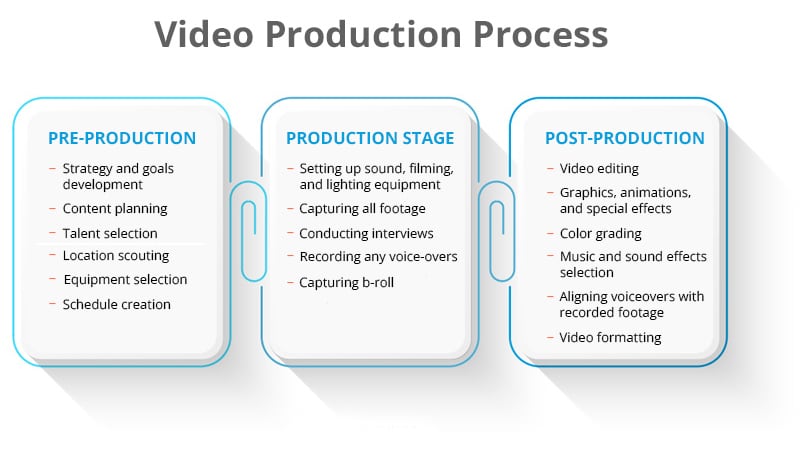
Phase one: Pre-production
Pre-production is the first and crucial stage in the video production process. During this phase, the production team sets the foundation for the entire project and lays out the roadmap for the rest of the production process.
The main focus of this phase is to plan, organize and gather all necessary resources needed for the successful completion of the video project.
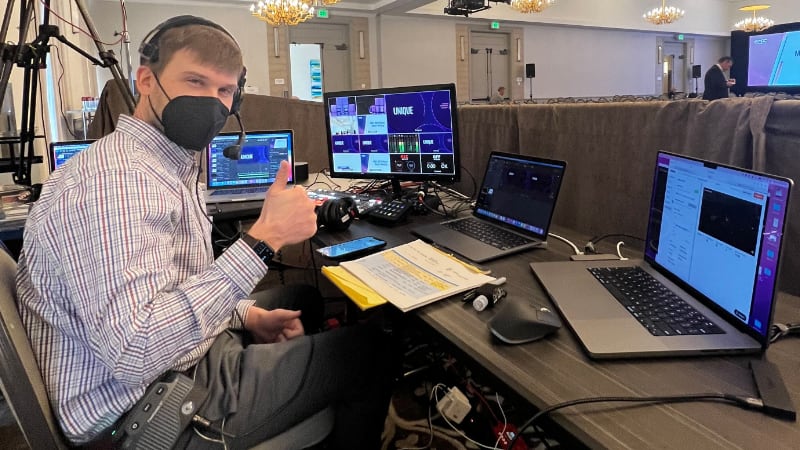
Pre-production should always start with a discovery process. LANE Media & Productions works exclusively with corporate clients and while our experience deals primarily with our client’s marketing needs the workflow is synonymous with any other type of production.
We want to know:
- Who is the audience?
- How long is the intended run time of the video(s)?
- Are we casting actors/spokespeople and how many?
- Will we be implementing any motion graphics, animation or stock footage?
- Will there be a voiceover?
- What are the demographics of any hired talent?
- Are we filming in a studio or natural environment?
- What is the ultimate message we are striving to convey?
Pre-production is essential. Try to learn and/or explore this as much as possible before jumping into any production stage.
Video pre-production process
Video strategy and goals development
Before filming can begin, it's important to have a clear understanding of the video's purpose and goals. This involves defining the target audience, identifying the key message to be communicated, and determining the desired outcome for the video.
In other words, this is where the production team will work with the client to define the goals, objectives, and messaging of the video.
Video content planning
Video content planning involves creating a script, storyboard, or shot list. The content plan is developed in a way that effectively communicates the desired message and achieves the desired outcome.
This step also involves deciding on the structure of the content and the overall look and feel of the video.
Talent or characters selection
The selection of talent or characters is an important consideration in pre-production. Depending on the needs of the project, actors, voice-over artists, or real-life individuals may be needed to bring the video to life. It's important to consider factors such as appearance, performance ability, and availability when making talent selections.
Location scouting
Locations are understandably a crucial element to any shoot and should be planned for accordingly. Whether it's an indoor or outdoor shoot, a suitable location will be selected based on factors such as accessibility, lighting conditions, and ambient noise. The location will also be scouted in advance to ensure that it will be suitable for filming on the day of the shoot.
Video production equipment selection
The right equipment is essential to ensuring a successful video production. This may include cameras, lighting, audio equipment, and any other special equipment required for the shoot. The equipment will be selected based on the needs of the project, as well as the location and conditions under which the filming will take place.
Schedule creation
Finally, a schedule will be created for the pre-production, production, and post-production stages. This schedule will address all of the tasks that need to be completed, as well as the deadlines for each task, from all players in the project. Having a well-organized schedule will help ensure that the project stays on track and that the final product is delivered on time.
At Lane Media and Productions, we understand the crucial role that pre-production plays in ensuring the success of your video project. Our pre-production process is tailored to your specific needs and goals, and our team of experienced professionals will work closely with you to bring your vision to life.
From concept development to scriptwriting, storyboarding, and location scouting, we will guide you every step of the way to ensure that every aspect of your project is thoughtfully planned out. Our pre-production process also includes casting and hiring any necessary talent, securing all necessary permits, and finalizing all logistics for the shoot.
Phase two: Production
Now the fun begins! After all the planning, preparation, and conceptualizing that takes place in pre-production, production takes center stage. The production phase is where the actual filming or recording of the video takes place.
This is when the storyboard and plan developed during pre-production are brought to life. The production phase involves setting up sound, lighting, and filming equipment and capturing all the footage needed to tell the story.
It's important to have a well-prepared and organized team, as well as a clear plan and schedule, to ensure a smooth and efficient production phase. This will ensure that all the footage captured is of the highest quality and aligns with the overall vision for the video.
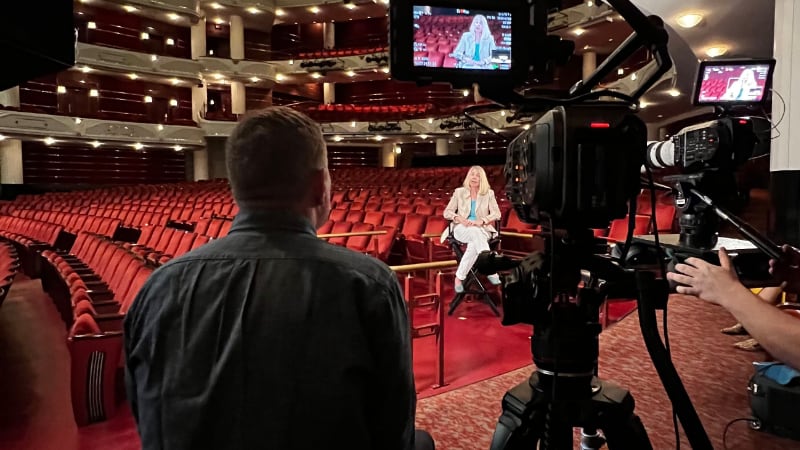
Before you head out to location, create a gear checklist prior to packing up the items you know you will need and then think extra hard about things that may come up (i.e., you are filming in an old building and there may not be electrical outlets near you – you will have to bring more or longer extension cords A.K.A. “stingers,” as they’re referred to on production sets). Check off the items as you pack them and arrange all your bags/cases in one location so nothing is forgotten.
Also, give yourself some extra time, especially when setting up in unfamiliar environments. Remember Murphy’s law: “Anything that can go wrong will.” Allow yourself the time to mitigate variables you can’t foresee.
Finally, issue a “call sheet” to any crew members, talent and clients attending the shoot. This document should list the names and positions, numbers and emails of all essential people. It must also include a schedule of the day including “call times” for crew, scheduled filming times and an estimated wrap time. Don’t forget to include the address of the location(s) and any information relevant to parking or other important details to help your day go more smoothly.
Video production process
Setting up sound, filming, and lighting equipment
During this stage, the video production team will assess the location, identify the best angles for filming, and arrange the lighting and sound equipment to create the desired mood and atmosphere.
They will also test and adjust the settings to ensure that the sound and lighting are perfect for capturing the footage.
Once you arrive on location, be sure to scout out the spaces where you will be filming and prep for any challenges that may arise (i.e., your favorite interview location relied on natural light and it’s storming). Make auxiliary plans for the unseen.
Decide your camera angle(s) for your first shot and then set up your lighting, audio and grip equipment. Make sure to tape down (use gaffers tape) loose cabling and wires that cause tripping hazards. Keep a clean set whenever possible.
Test your shot with a subject in frame and think about what else you can do to improve the composition, lighting, background items/props, etc.
Capturing all footage
Once the equipment is set up, the filming can begin. This may involve capturing dialogue, action, b-roll, and any other footage that is required for the video. It's important to capture all of the footage in a way that is in line with the content plan developed during pre-production.
In addition to the technical aspects, the filming process also requires effective communication between the director and the actors. The director will guide the actors through each scene, helping them to get into character and deliver their lines naturally. The cinematographer will work with the director to capture the best shots and ensure that the visual elements support the story.
Conducting any interviews
Conducting interviews is an important aspect of the video production process as it provides an opportunity to gather important information, perspectives, and stories that can be incorporated into the final video. It involves setting up the interview area, which includes the right lighting, sound, and camera equipment.
During the interview, the goal is to make the subject feel comfortable and to gather the most engaging and informative responses possible. The footage captured during the interview will then be used in post-production to craft the story of the final video. The video production team must work seamlessly to ensure that the interview process is smooth, and efficient and results in high-quality footage.
Documentaries, corporate videos and many other types of video projects rely heavily on interview content. For a non-professional actor, it can be a daunting scene to walk into a room with all the recording, lighting and audio equipment.
Whether you’re there as crew, the interviewer, producer, or all the above, it’s important to help them feel comfortable. When time permits, let the interviewee sit or stand in his filming position and just throw some softball questions their way to help them relax. Be patient with people in the hot seat and help them get out what you want out of them.
Recording any voice-overs (if they are needed for your project)
Voice-overs are typically used to provide additional context, set the scene, or provide a narrative that complements the visual elements of the video.
The recording process itself is usually done in a soundproof studio, using specialized equipment such as a microphone, headphones, and audio software. The voice talent reads the script and the audio is recorded and edited as needed to ensure it fits seamlessly into the video.
Incorporating voice-overs into the video production process is an effective way to add depth and meaning to a project, helping to engage the audience and bring the story to life. When done right, the result is a high-quality audio track that enhances the overall viewing experience.
Capturing b-roll (extra footage that is used to support your story)
Nobody wants to see a “talking head” take over their screen. Effective video communication, and especially when distributing to the web, requires creating layers to help keep the content engaging. B-roll is one of the layers we implement into the final deliverable(s). We capture a-roll, which consists of primarily capturing interview footage and dialogue. Capturing b-roll is typically done in parallel with the main filming and should correlate to the topic being discussed, but can also feature scenic and detail shots to enhance the content or beauty of the picture.
In addition to capturing true b-roll footage, the production team may also use this time to capture additional sound and audio elements, such as ambient noise or sound effects. These elements will be carefully edited and incorporated into the final product to create a rich and immersive experience for the viewer.
At Lane Media and Production, our video production process is focused on capturing all the footage necessary to bring your vision to life. We take pride in our attention to detail and commitment to quality, ensuring that every aspect of your production runs smoothly and efficiently.
Phase three: Post-production
Capturing the footage is only half the battle. After the production phase, the post-production stage is where the real magic of video creation happens. This is the stage where the raw footage is transformed into a polished and engaging final product.
In the post-production stage, video editors select the best takes, arrange them, and add special effects, music, and sound effects. They also adjust colors and tones to create a cohesive and visually stunning final product, and create and edit sound effects to enhance the video's emotional impact.
Overall, post-production is a complex and creative process that transforms raw footage into a polished and engaging final product that captures the viewer's attention and effectively communicates the intended message.
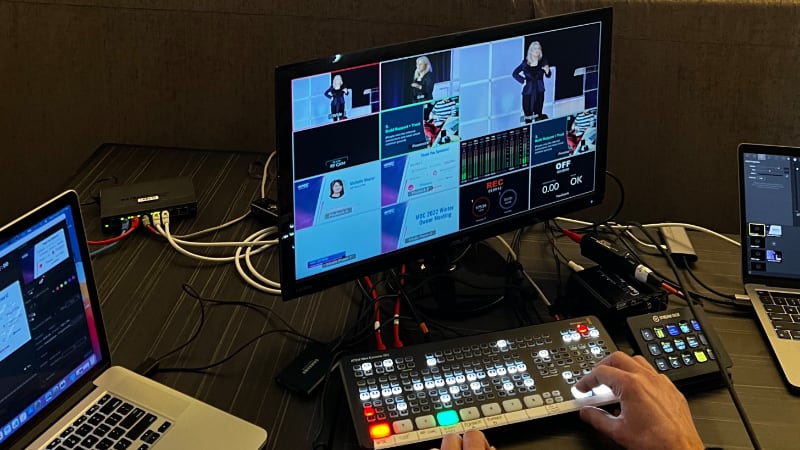
The three major Non-Linear Editing programs (NLE) these days are Adobe Premiere, Apple’s Final Cut X and DaVinci Resolve. Each offers its own set of advantages and disadvantages. However, they’re all capable of handling complex tasks in the post-production process.
Today, most digital cameras record a standard 4K resolution at varying bit rates, but don’t forget that you need the proper computer graphics card and RAM to handle the footage you’re working with or it’s going to be a slow and agonizing process for an editor. You may need to create proxy files to work with your footage in a more expeditious manner.
Video post-production process
Video editing
Video editing is where the footage that has been captured during production is carefully pieced together to form a cohesive story. During this stage, the editor will review all of the footage and select the best takes to use in the final cut. They will then organize the selected footage into a rough cut, which serves as a foundation for the rest of the editing process.
From here, the editor will make adjustments and fine-tune the pacing and flow of the video. They may add special effects, transitions, music, and sound effects to enhance the overall viewing experience. The editor will continue to refine the cut until it is polished and ready for the final output.
Video editing is a crucial step in the post-production process, as it has the power to elevate the raw footage into a captivating and impactful final product.
Graphics, animations, and special effects
The process of adding graphics, animations, and special effects to a video brings the final product to life, adding a visual and emotional impact that can take the viewer on a journey. It allows the creative team to take plain, raw footage and turn it into an engaging and visually stunning masterpiece.
In this stage, the video editor will work with the animation and graphics team to add visual elements that enhance the storytelling aspect of the video. This could include adding text and captions, designing custom graphics, and adding special effects that add a layer of depth and emotion to the video. The goal is to make the video as visually appealing and engaging as possible, while still maintaining its intended message.
Color grading
Color grading involves adjusting the colors and hues of the footage to create a desired look and feel for the final product. This step can greatly impact the overall tone and mood of the video and can be used to enhance the storytelling.
Professional color grading software and techniques are used to make precise changes to the footage, ensuring that the final product is visually appealing and meets the desired aesthetic. The color grading process often involves multiple rounds of adjustments, with the final product being carefully reviewed to ensure that it meets the desired standards.
Overall, color grading plays a crucial role in creating a polished, professional video that effectively conveys the intended message.
Music and sound effects selection
In the post-production stage, the editor will carefully select and layer music and sound effects to enhance the overall viewing experience. Music can be used to evoke emotions and convey a certain mood or tone, while sound effects can help to create a sense of reality and immersion for the viewer.
The music and sound effects selected should be well-suited to the video’s content and help to reinforce the message being conveyed. The editor will often experiment with different music and sound effects options, adjusting their volume and timing until they find the perfect combination. The selection of music and sound effects is an art form in and of itself and requires a deep understanding of the audio production process and the ability to tell a story through sound.
Aligning voiceovers with recorded footage
Voiceovers serve as a powerful tool for conveying important information and storytelling elements. During the post-production process, the voiceover recording must be aligned with the recorded footage to ensure a seamless and coherent final product. This can be done through the use of digital audio workstations, which allow the audio engineer to precisely time the voiceover to specific moments in the video.
The goal of aligning voiceovers with recorded footage is to make the voiceover feel like it is an integral part of the video, rather than a separate component added after the fact. This step can be time-consuming and requires keen attention to detail, but it is an essential part of creating a polished and professional final product.
Video formatting
Video formatting is the process of finalizing the video project for distribution and delivery. During this phase, the final cut of the video is exported and saved in the desired format and specifications required by the client. The video may need to be adjusted to meet certain requirements, such as file size, aspect ratio, and resolution. The final video file is then reviewed and approved by the client before it is delivered.
In video formatting, attention to detail is critical as small adjustments can greatly impact the final look and feel of the video. It is important to make sure that the video is not only visually appealing but also meets the technical requirements for the intended use and distribution platform.
At Lane Media and Productions, the final phase of video production is just as important as the pre-production and production phases. This is where all the pieces come together to create a polished, final product that effectively conveys your message.
In post-production, our team uses state-of-the-art software and technology to refine the raw footage and bring your vision to life. Whether it's through video editing, adding graphics, and special effects, or incorporating sound and music, our goal is to make sure every detail is perfect.
Remote video production process
With the rise of remote work and the increased need for virtual content, remote video production has become a popular alternative to traditional in-person production.
Remote video production refers to the process of creating video content from a remote location using technology such as video conferencing, cloud storage, remote collaboration tools and even sending portable camera kits and accessories to people.
Common methods of remote production include:
- Using an iPhone/smartphone
- Zoom, Microsoft Teams or other video conferencing solutions
- Using a built-in computer camera
- Sending and receiving camera kits
The four major pitfalls of remote production are inadequate audio or “drifting audio” (this is where the movements of the mouth and the words become obviously separated over time – especially prevalent in cloud recording), poor subject or background lighting, internet disruptions (if recording to the cloud), and finally, a lack of authenticity from the talent’s delivery.
While there are many disadvantages due to technical and aesthetic shortcomings, this method of video production allows for flexibility, cost-effectiveness, and access to a larger talent pool for some people/companies.
Remote video production vs. traditional video production
Professional in-person video production outweighs professional remote recording in every possible scenario, except cost. The higher-end recording equipment you try to introduce to people and expect them to understand complex terminology and menu operations the more likely people will fail. And, when you dumb down the tech, you get poorer results.
However, certain projects or budgets require remote production. And, if this is the case it’s best to work with a media professional who can guide the “talent” on lighting, composition and framing considerations. A media professional can and should be virtually monitoring the recording to chime in when they deem it necessary to have the “talent” redo something, plus look out for unwanted background movement and all the sounds/noises that might creep into the recording.
Work with a professional video production company in the Chicago area
Quality professional video production is the culmination of experience, preparation, an artful spirit, attention to detail, the right equipment and the ability to collaborate with crew, talent and oftentimes, the client. Video and audio production is highly technical and takes years for people to scratch the surface.
When you partner with us, you can trust that your project is in good hands. From pre-production to post-production, we'll handle every aspect of the process and ensure that your final product is nothing short of amazing. Not only do we have a deep understanding of the video production process, but we also have a passion for creating top-quality content that stands out and delivers results.
We are proud of the work we’ve been producing since 2010 in the Chicago area, but also for our many clients around the country. Our success is only possible through our clients’ success and we take great measures to help elevate the brands we work with.
If you’re a business looking to create engaging and impactful video content we hope to hear from you! Consultations are always gratis and we are hungry to learn more about you and your needs!
Thank you for signing up for our newsletter! We appreciate your interest in staying connected with us.
Stay connected
Sign up for our newsletter with the latest insights, exclusive tips and more.



